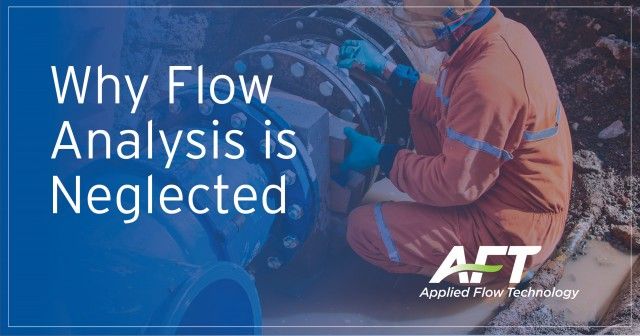AFT Blog
Why Flow Analysis Is Neglected
We hope you enjoyed our previous article on the Top 6 Reasons Your Design Should Include Flow Analysis.
But now… let's get a bit serious and talk about three main reasons why flow analysis is neglected during the design process. It could be straight
You might be familiar with one or two of these points. Some may be in your control and others might be outside of your reach. Regardless, we hope that if you do find yourself within one of these realms - you will contact AFT to see how we can help you navigate within a software evaluation and show you how to easily overcome any of the below points.
Let's get started.
Cost
A primary goal for end users (i.e., owner/operators) is for the project to come in under budget
If an engineering design company went the extra mile to determine a more optimal piping system configuration, they could potentially save end users millions of dollars in operating costs. This, however, may require a costlier system to be built up front and may not fit the budget either.
Therefore, end users may not require (or even ask) engineering companies to do a flow analysis due to the added cost, nor would an engineering company suggest doing it for the same reasons.
Lack of End User Education for Flow Analysis Value
End users are busy trying to keep the plant operating day to day. While some end users do understand flow analysis benefits, they do not have the time to build a model from scratch themselves.
Operations are often guided by simple observation of the system and making various adjustments to reduce noise or vibration, but there is not much scientific understanding as to why changing the operation in certain ways reduces noise or vibration among other issues.
A flow model easily shows why the system operates in a certain way. End users would better understand how the system interacts with itself
Educating end users on the benefits of flow analysis is of key importance
Piping System Codes & Standards Do Not Require Flow Analysis
Piping codes and standards typically do not require the designer to conduct a flow analysis
A major downside is that systems are often significantly oversized. As the designer completes their work, they add a safety factor to account for unknowns. This is important to do since the "
Do any of these points ring a bell? As
That is why Applied Flow Technology software exists - to give engineers the tools to succeed. Since advanced technology is readily available, it is our responsibility to learn how we can do a better job designing systems with powerful tools like these.
Fortunately, AFT can show you the costs, if you are violating any design requirements, codes
When you work with AFT software for incompressible flow, compressible flow, and
This article is the second article in a 3-part series. Now that we have given you the Top 6 Reasons Your Design Should Include Flow Analysis,lets
If you have any feedback for us on this or any of our articles, please feel free to contact us at This email address is being protected from spambots. You need JavaScript enabled to view it..




Comments